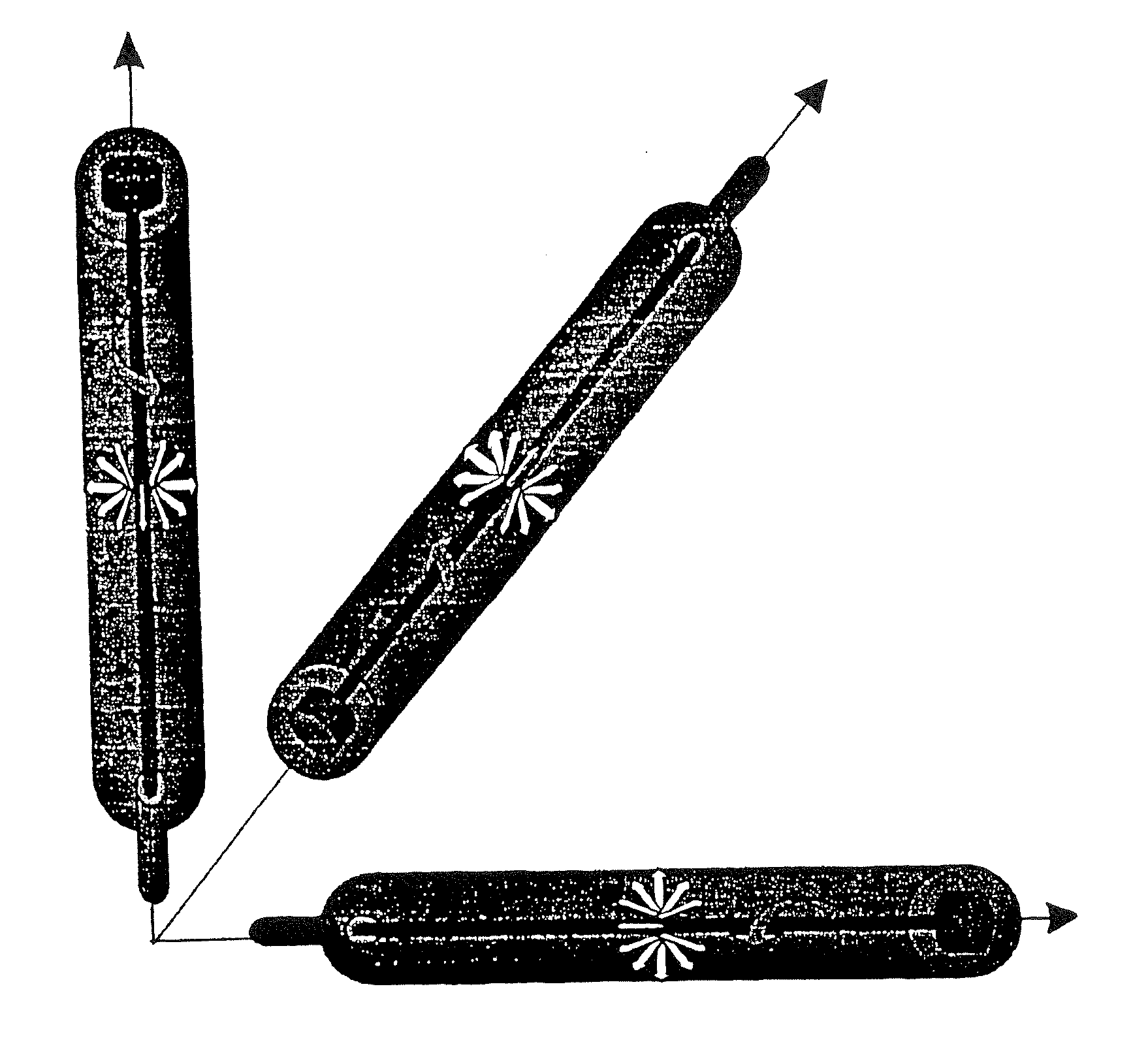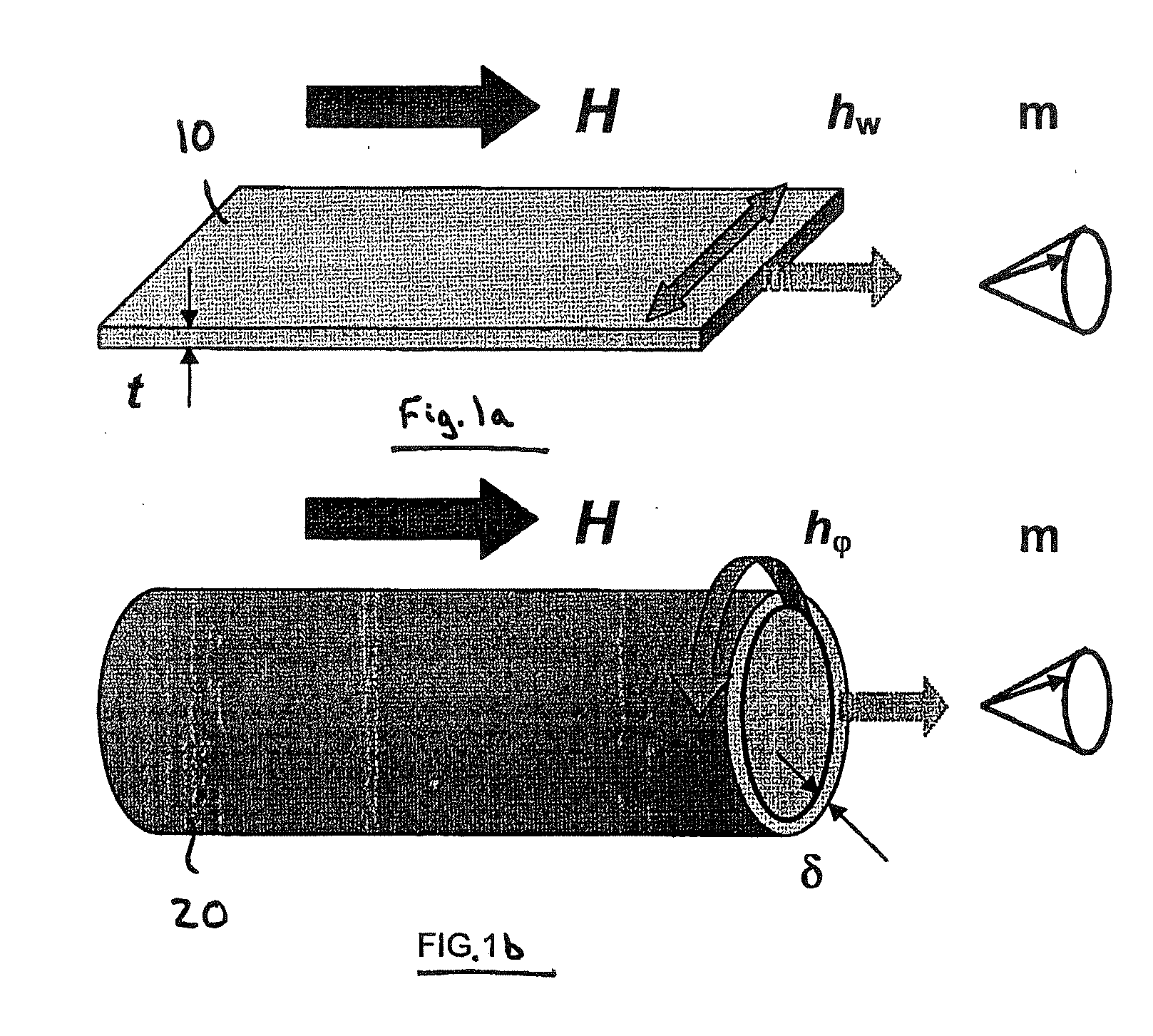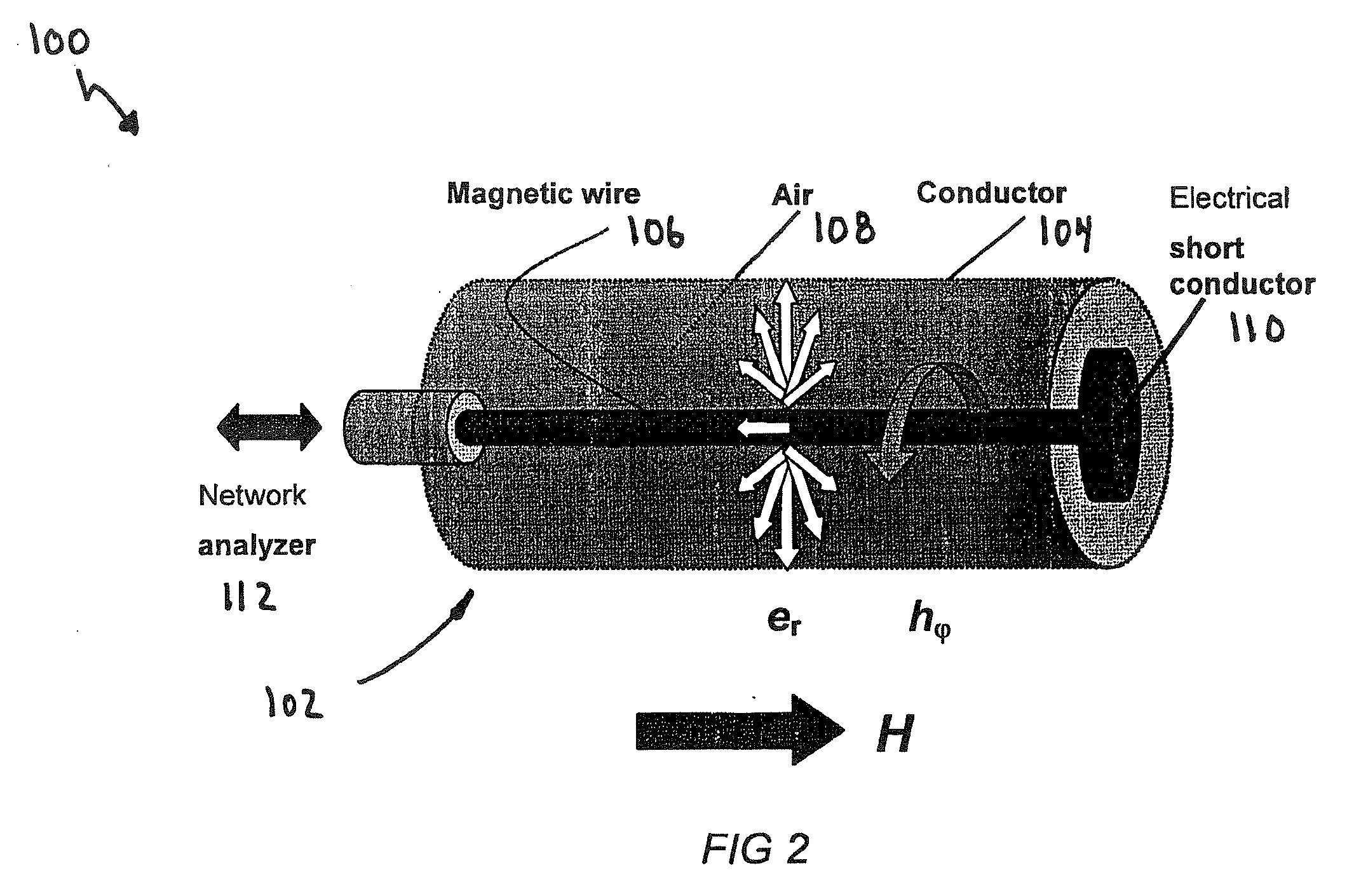Magnetic anomaly detector and method using the microwave giant magnetoimpedence effect
a technology of giant magnetoimpedence and magnetic anomaly detector, which is applied in the direction of magnetic field magnitude/direction, measurement devices, instruments, etc., can solve the problem of less accurate than optically pumped cesium vapor magnetometer, and achieve high magnetic field sensitivities
- Summary
- Abstract
- Description
- Claims
- Application Information
AI Technical Summary
Benefits of technology
Problems solved by technology
Method used
Image
Examples
Embodiment Construction
[0023] In the following description, a magnetic anomaly detector and method making use of the microwave GMI effect are discussed. The magnetic anomaly detector comprises at least one electromagnetic transmission line having at least one conductor acting as a sensing element comprised of a soft magnetic material. In one embodiment, the at least one conductor is an amorphous magnetic wire, 40 to 120 μm in diameter, made of a Ni45Co25Fe6Si9B13Mn2 or similar alloy, for a saturation magnetization of the magnetic wire of around 200 kA / m or emu / cm3. This is high enough that a ferromagnetic resonance is detectable in the skin depth of the magnetic wire, but not too high, so that the resonance frequency stays in the low GHz range. This provides advantages concerning the signal to noise ratio and the resolution in frequency of the magnetic anomaly detector as will be described.
[0024] For ease of reference, the principles of ferromagnetic resonance and the microwave GMI effect will be firstly...
PUM
 Login to View More
Login to View More Abstract
Description
Claims
Application Information
 Login to View More
Login to View More - R&D
- Intellectual Property
- Life Sciences
- Materials
- Tech Scout
- Unparalleled Data Quality
- Higher Quality Content
- 60% Fewer Hallucinations
Browse by: Latest US Patents, China's latest patents, Technical Efficacy Thesaurus, Application Domain, Technology Topic, Popular Technical Reports.
© 2025 PatSnap. All rights reserved.Legal|Privacy policy|Modern Slavery Act Transparency Statement|Sitemap|About US| Contact US: help@patsnap.com



